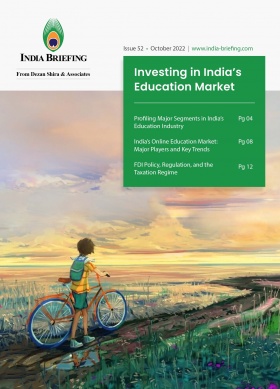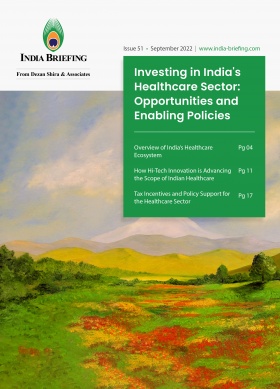Government Opens Applications for Semiconductor and Display Fabs under Modified Program from June 1
India’s Ministry of Electronics and IT announced on May 31 that it is accepting applications once again under a modified version of the Semicon India Program. Old and new applicants are welcome to submit their proposals but must meet government criteria. It is being reported that the government has so far been unsatisfied with the applications for the more expensive 28nm fabs. Evaluations of the investment proposals will be done by the India Semiconductor Mission.
The government of India has announced that it is now accepting new applications from June 1, 2023 for the establishment of semiconductor fabs and display fabs in the country. This initiative falls under the ‘Modified Semicon India Programme’ and aims to develop the semiconductor and display manufacturing ecosystem in India.
Interested parties can submit their applications online through the India Semiconductor Mission (ISM) portal. The responsibility of implementing the Modified Semicon India Programme lies with the India Semiconductor Mission, which serves as the designated nodal agency for this purpose.
Under the modified program, companies, consortia, and joint ventures planning to set up semiconductor fabs in India, regardless of their stage of development (including mature nodes), are eligible for a fiscal incentive of 50 percent of the project cost. Similarly, a fiscal incentive of 50 percent of the project cost is available for the establishment of display fabs utilizing specified technologies in India.
The application window for the “Modified Scheme for Setting up of Compound Semiconductors / Silicon Photonics/Sensors Fab/Discrete Semiconductors Fab and Semiconductor ATMP/OSAT facilities in India” will remain open until December 2024. This is likely because the 45-day application window for initial round to the scheme was deemed too short, attracting only three proposals for the 28nm fabs.
Additionally, the application window for the Design Linked Incentive (DLI) Scheme is open until the same date – December 2024. As of writing this article, the Government of India has received 26 applications under the DLI Scheme, with five applications already granted approval.
Previously, the government had launched the ‘Semicon India Programme’ in December 2021, allocating INR 760 billion (approx. US$9.18 billion) towards the development of the semiconductor and display manufacturing ecosystem in the country. (US$1=INR 82.74.)
Applicants who had already applied for setting up semiconductor fabs and display fabs under the earlier schemes are also eligible to submit their applications under the Modified Scheme after making suitable modifications to their proposals.
In related news, the Indian government looks set to refuse incentives for the semiconductor JV between Anil Agarwal’s Vedanta Resources Ltd and Taiwan’s Hon Hai Precision Industry Co (Foxconn) to produce 28 nanometer chips.
This is likely because the Vedanta-Foxconn JV could not meet the government’s strict criteria as the Semicon India Program intends to build an indigenous semiconductor manufacturing and R&D ecosystem in the country. Applicants for the government’s billions of dollars worth incentives require a technology partner and a manufacturing-grade technology license to build the chips besides providing necessary material to the government, such as information on technology transfer.
Vedanta has recently faced concerns over managing its significant debt. Last September, the Vedanta-Foxconn JV announced they were investing about US$19 billion in building semiconductor and display production plants in Gujarat.
About Us
India Briefing is produced by Dezan Shira & Associates. The firm assists foreign investors throughout Asia from offices across the world, including in Delhi and Mumbai. Readers may write to india@dezshira.com for more support on doing business in India.
We also maintain offices or have alliance partners assisting foreign investors in Indonesia, Singapore, Vietnam, Philippines, Malaysia, Thailand, Italy, Germany, and the United States, in addition to practices in Bangladesh and Russia.
- Previous Article Japan’s Omron Healthcare to Open a Medical Device Factory in Tamil Nadu, India
- Next Article Tax Compliance Calendar for Enterprises in India in June 2023








